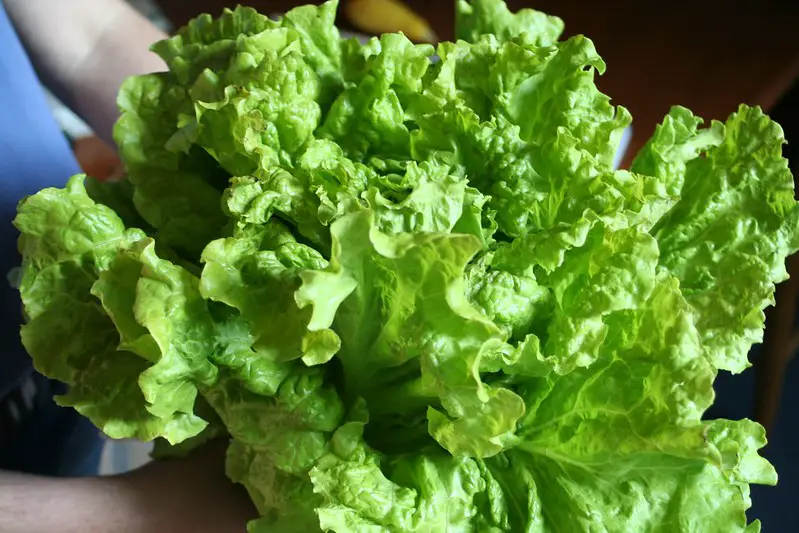We use affiliate links to run our site. When you buy through links on our site, we may earn an affiliate commission, without any added cost to you. Learn more
Bitter lettuce can ruin even the most delicious salads. It can be disappointing after all the time and effort you put into growing it. Why does this happen and how can you prevent it?
Lettuce is one of the easiest vegetables you can grow. In most cases, lettuce is grown for its sweet-tasting leaves. But these tasty leaves can turn bitter very quickly and spoil all the fun.
In this blog post, I’ll explain the main causes of bitter lettuce and share six easy ways to avoid them. You’ll learn how to grow sweet and tasty lettuce that you and your family will enjoy.
Let’s get started!
Is Bitter Lettuce Safe To Eat?
Although bitter lettuce might not be the most delicious thing in the world, and surely it is not as tasty as sweet lettuce leaves, you can eat it without any problem.
Bitter lettuce does not have any harmful chemicals that can create any problem for your health and is, therefore, safe to eat.
To reduce the bitterness you can mix them with other sweet-tasting toppings like cucumbers, cherry tomatoes, and cheese.
Why My Lettuce is Bitter:
Although bitter lettuce leaves are still edible, there are ways to prevent them from becoming bitter in the first place. But before I tell you how to prevent your lettuce turn, you should first know the reason why they become bitter.
There are several reasons why lettuce leaves can become bitter. They include warm weather, lack of water, nutrient deficiency, or an excess of nitrogen in the soil. Even plant maturity or disease can also contribute to the problem.
Let’s dig deeper into those reasons.
Warm Weather:
More often than not, bitter lettuce is the result of summer heat. Lettuce is a cool-weather vegetable. So when there is a significant increase in temperature, it triggers their maturation process. The lettuce starts bolting by sending out stalks and flowers and the leaves will taste bitter.
Lack of Water:
Is your lettuce getting enough water for its daily needs? Too little water can cause a bitter taste in lettuce.
Lettuce needs a lot of water for maintaining its sweet taste. Keep an eye on those large, flat leaves. Are they turning brown, especially at the edges? This is a clear sign of a lack of water in them.
Keep watering your plants with enough water so they don’t become dry.
Lack of Nutrients:
Lettuce is a fast-growing plant. So they also need their nutrients very quickly. A deficiency of nutrients not only causes the leaves to taste bitter but also reduces the height of the plant.
To avoid this problem fertilize your plants regularly.
Too Much Nitrogen in The Soil:
Just as a lack of nutrients can harm your lettuce plants, an overdose of nitrogen can also cause bitter-tasting lettuce.
To counter the problem add a small amount of wood ash to your soil.
Affected by Diseases:
A disease commonly known as aster yellows can cause bitter-tasting lettuce. You can easily find out if your plant has been affected by this by checking the leaves.
If the plant is affected by aster yellows, the out leaves of the lettuce become shunted while the inner ones lose color. And the plant as a whole become deformed.
The Plant Has Matured:
In this stage, the lettuce leaves will taste bitter. Plant maturity is a natural process and there are very little you can do to prevent this.
When your lettuce plant is two months old, carefully watch for signs of bolting. So that you can harvest the remaining leaves before they turn bitter.
How to Prevent Bitterness in Lettuce:
Now that you know what causes bitterness in lettuce leaves it’s time to prevent this from happening. Here are a few things you can do to make sure your lettuce comes out crisp and refreshing every single time:
- Plant your lettuce in partial shady areas. Partial shade will keep the environment cooler but also make sure the plant receives some sunlight for growing.
- If you live in warm climates grow lettuce only in cooler months.
- Choose a lettuce variety that is suitable for your local climate.
- Use mulch to cover the soil. It will keep the soil moist and cooler.
- Mix coco coir with the soil while growing lettuce. Lettuce grows best in coco coir.
- Harvest lettuce only in the mornings so the plant has the night to recover from water loss.
How to Reduce The Bitterness:
You can reduce the bitterness of lettuce leaves by soaking them before eating. Separate the leaves and put them in a container filled with cold water and a bit of baking soda. Leave it for 10 minutes and then rinse thoroughly.
If everything fails you can cook your lettuce instead of eating raw. Cooking helps remove bitterness in lettuce leaves. Also mixing lettuce with other sweeter leafy greens like spinach can reduce its bitterness.
I hope this article has helped you in knowing about bitterness in lettuce leaves. For more information on how to grow lettuce read our earlier post.
Like the post? Don’t forget to PIN IT

Amazon and the Amazon logo are trademarks of Amazon.com, Inc, or its affiliates.

Hi there! My name is Prasenjit and I’m an avid gardener and someone who has grown a passion for growing plants. From my hands-on experience, I have learned what works and what doesn’t. Here I share everything I have learned.
